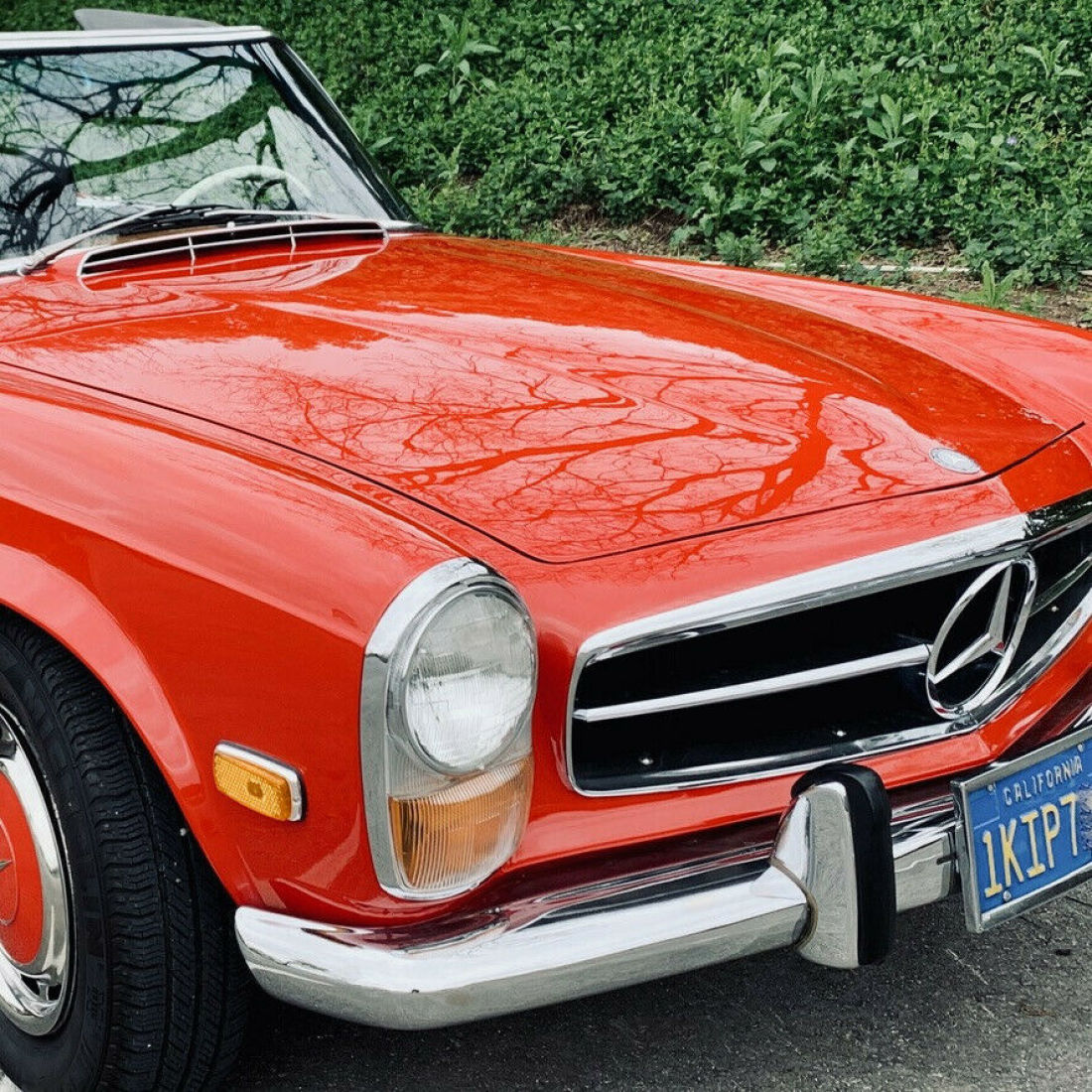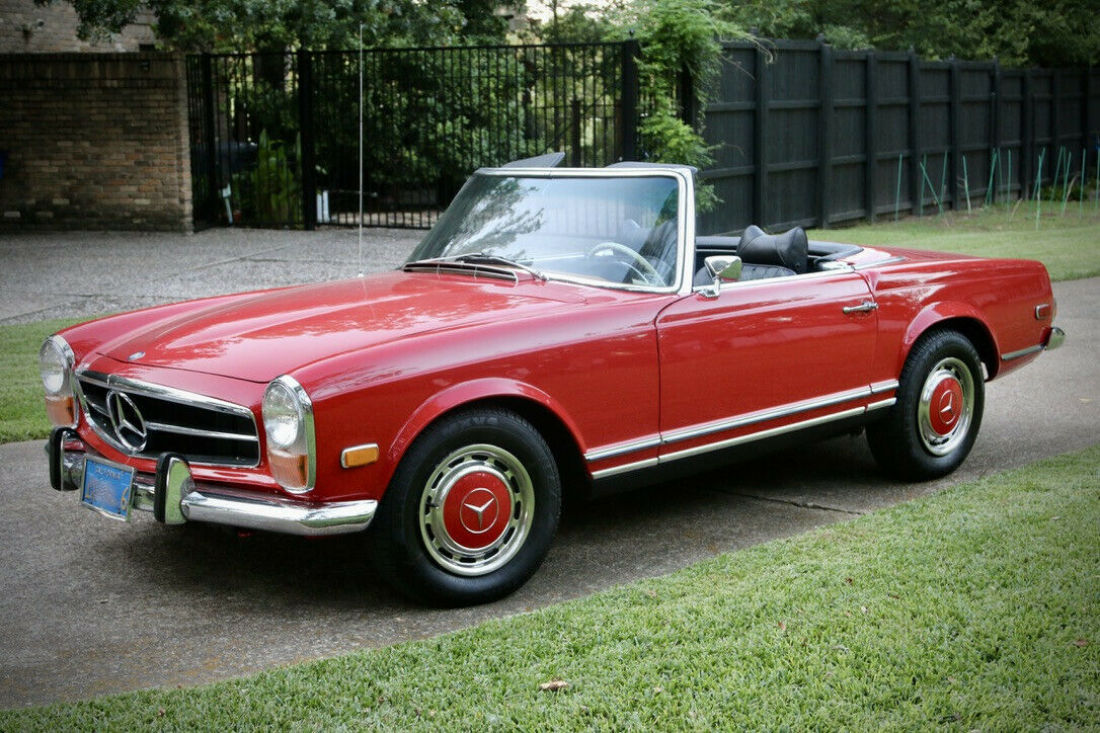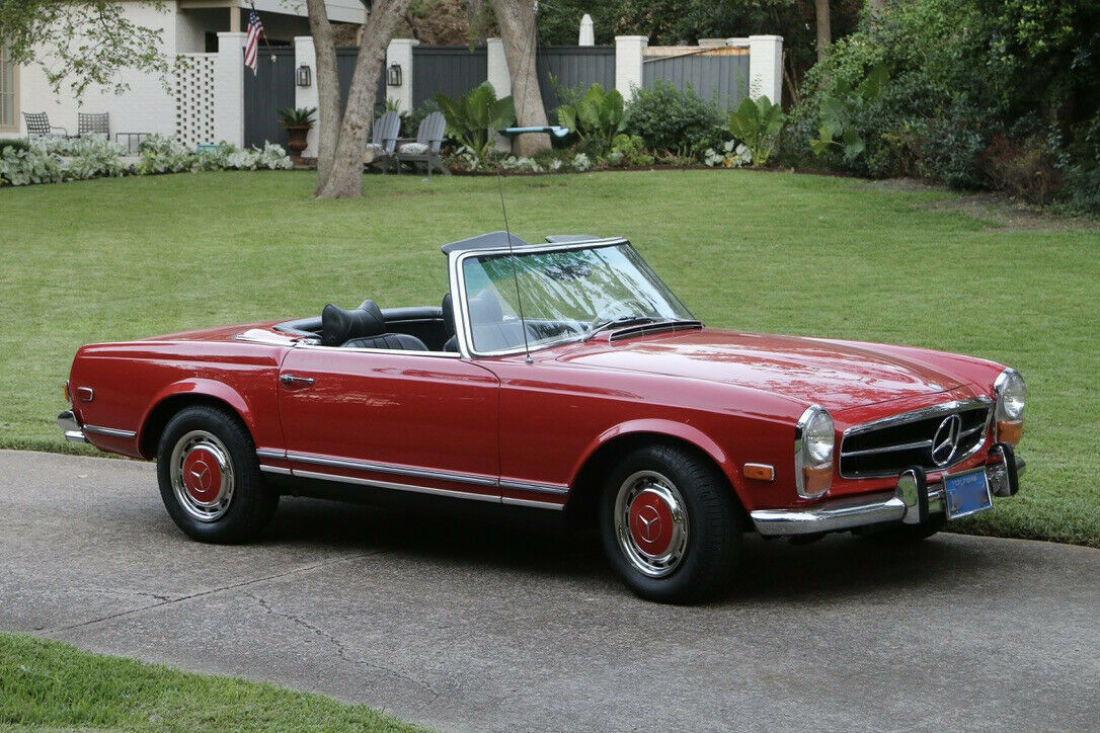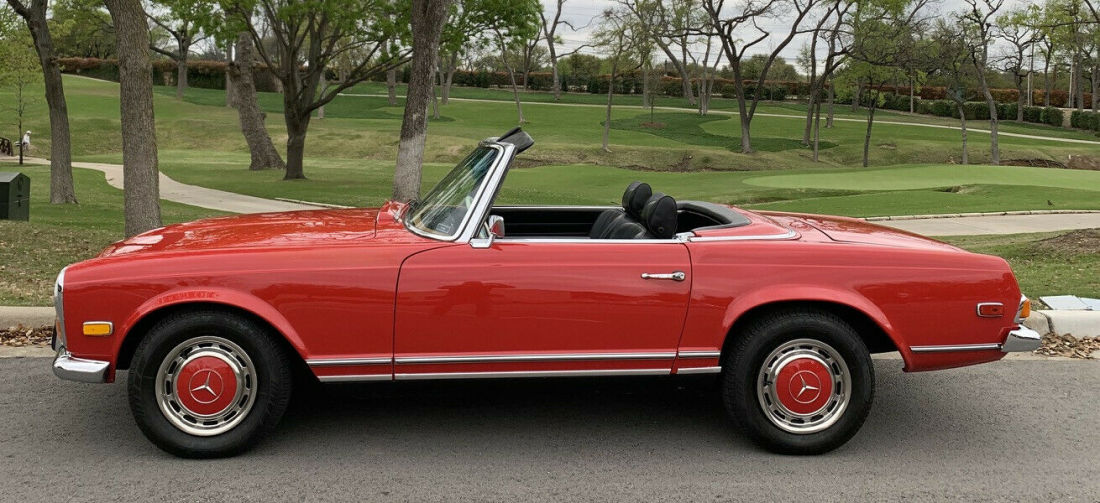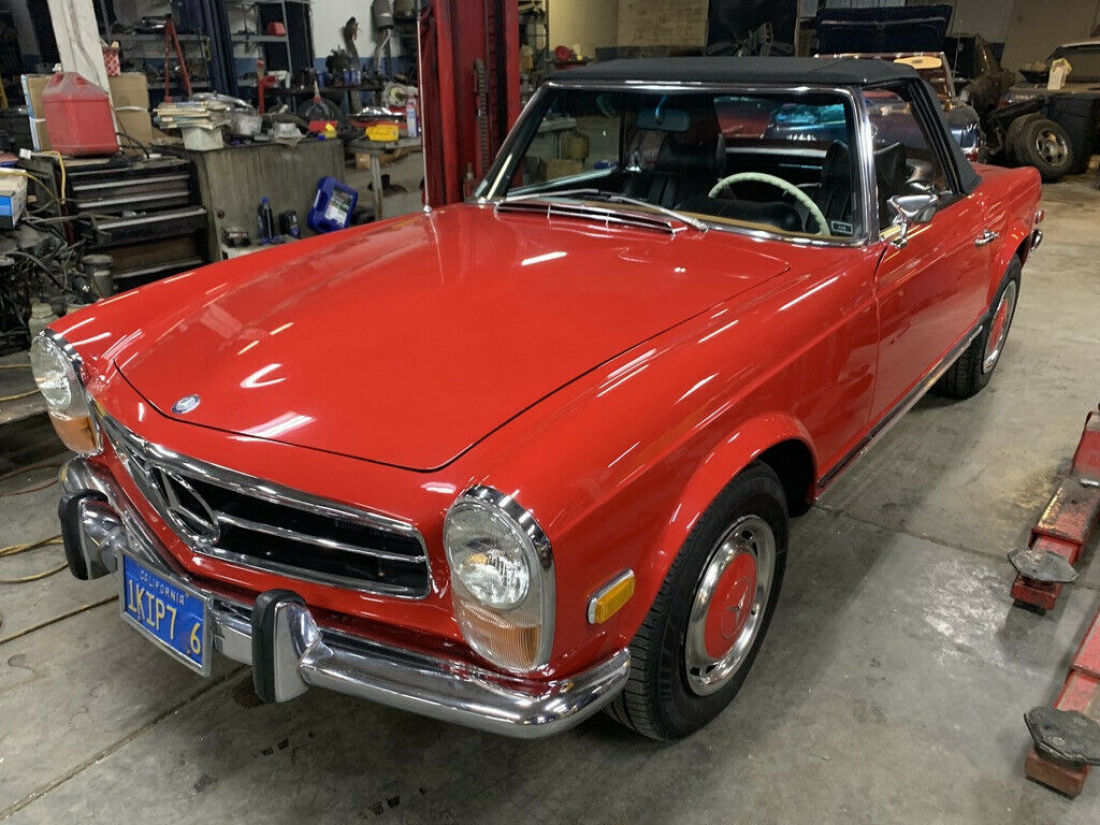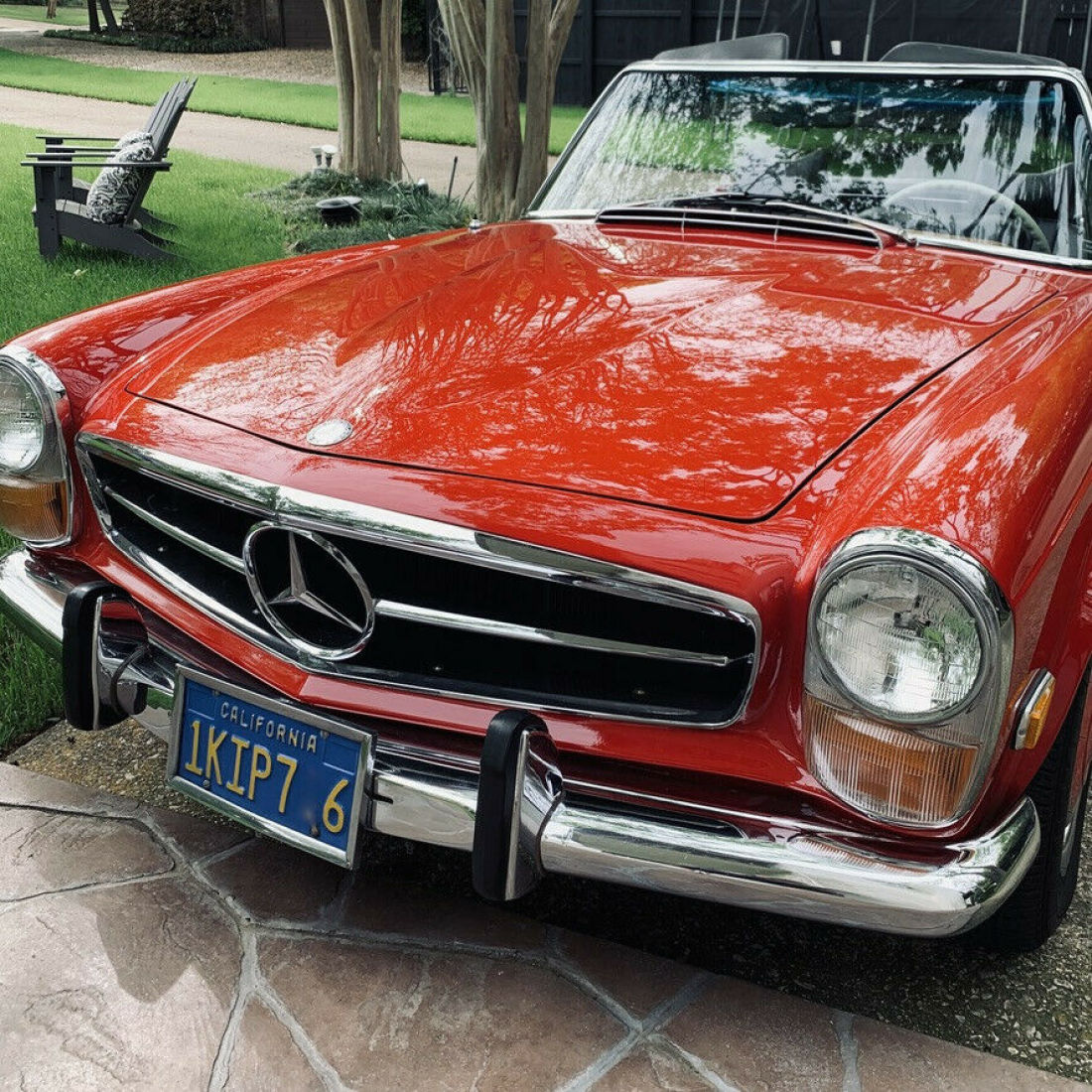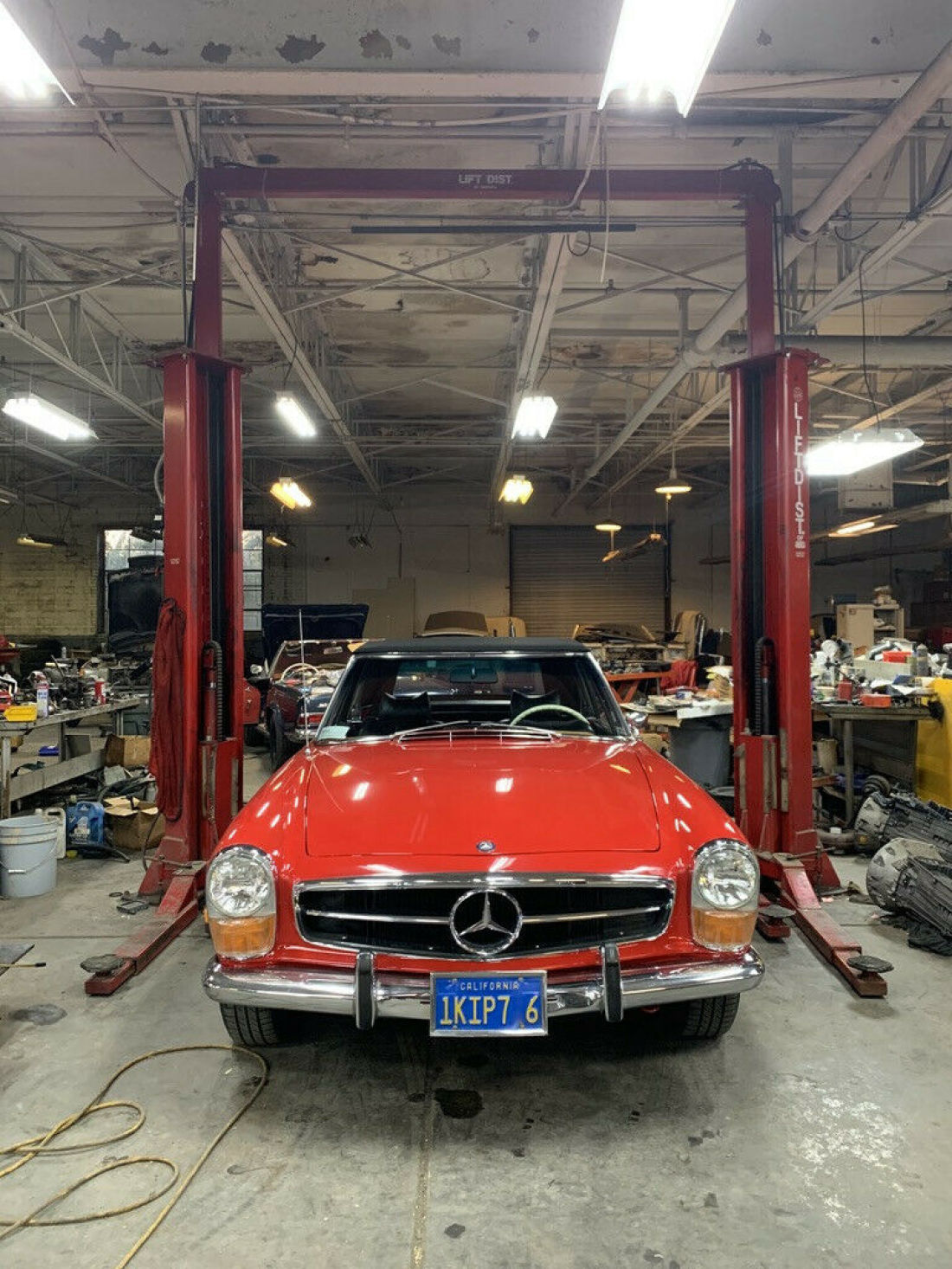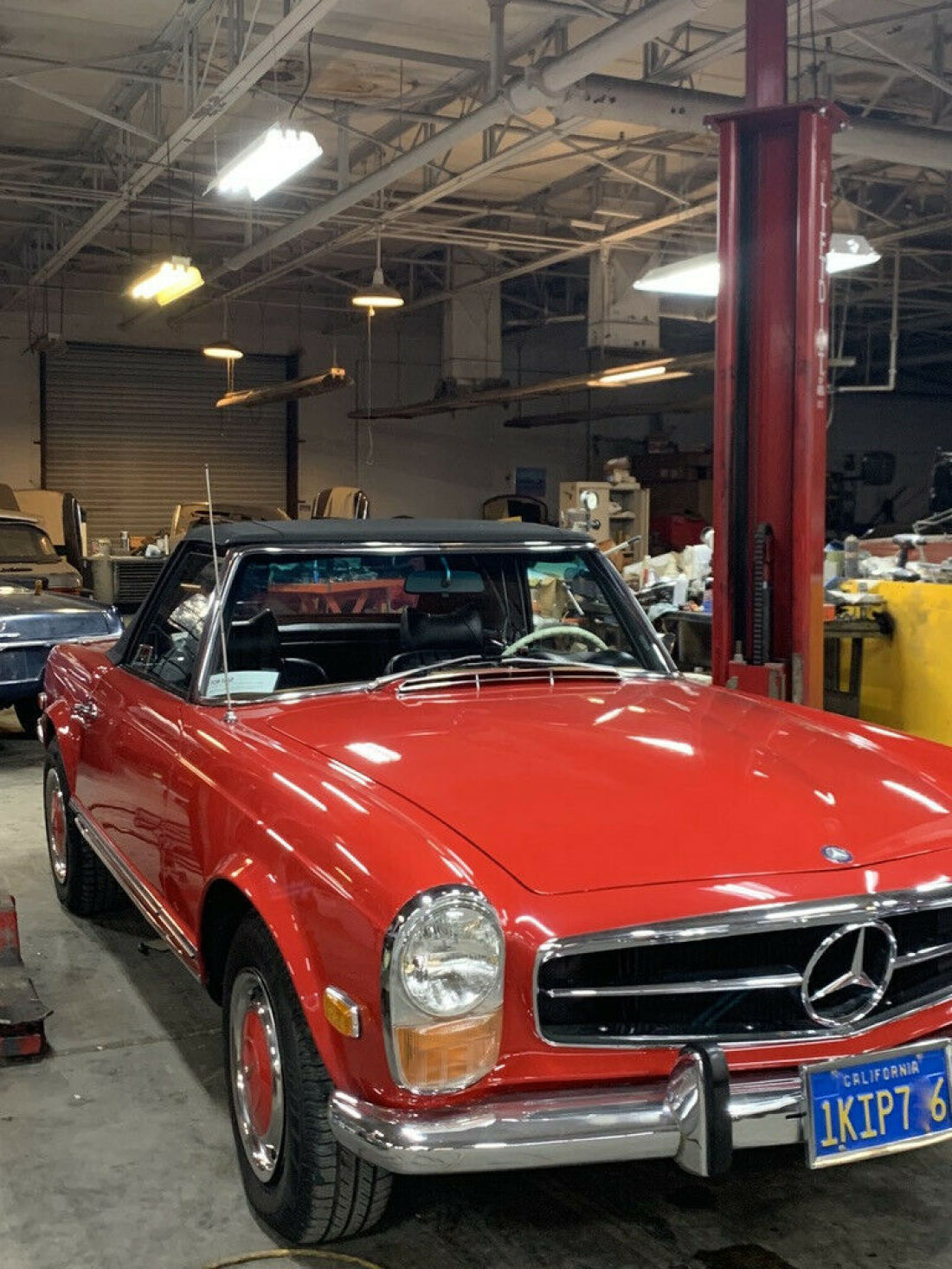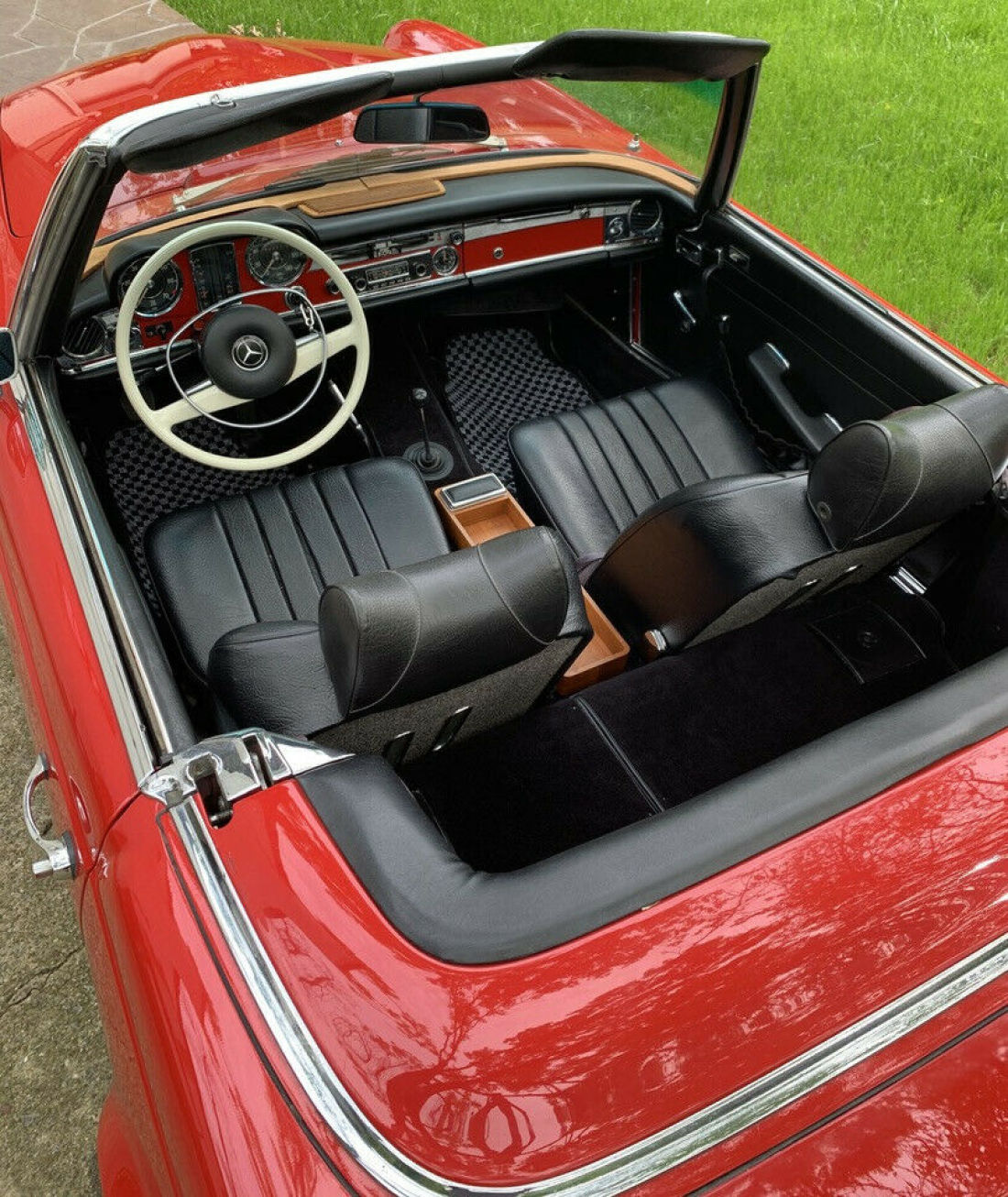1970 Mercedes Benz 280SL Pagoda only 82k miles
- Location: Dallas, Texas, United States
- Condition: Used
- Make: Mercedes-Benz
- Model: SL-Class
- SubModel: 280SL
- Type: Convertible
- Trim: 280SL
- Year: 1970
- Mileage: 82422
- VIN: 11304410014474
- Color: Red
- Engine size: 6 Cylinder
- Power options: --
- Fuel: Gasoline
- Transmission: Manual
- Drive type: 2dr Conv
- Interior color: Black
- Options: Convertible
- Vehicle Title: Clean
1970 Mercedes-Benz SL-Class 280SL Description
This amazing 1970 Mercedes-Benz 280SL was one of the first of 1970 as manufactured in November of 1969 and sold on Feb 20th 1970 by Mercedes-Benz Dealer #05723 located in Southern California. It spent the first 48 years registered in the state of CA until sold at auction in Arizona in 2018 to a collector from Dallas. The car was then acquired by the current owner in the summer of 2019. It shows 82k miles believed to be original and is currently finished in Signal Red over a Black MB-Tex interior.The factory exterior color was originally 050G White. The car was later repainted Signal Red(DB-568 H), a correct color for the W113 Pagodas from 1963 through 1971. The sale includes a 568 Signal Red color body-matched removable hardtop in excellent condition, 14” wheels with new Michelin Energy tires with chrome wheel covers featuring matching Signal Red centers, as well as US-market lighting and bumpers and a new black convertible soft top along with new springs and seals installed in December of 2019 as part of the recent work and restoration.
Power is from a 2.8-liter inline-six cylinder, four stroke upgraded for the 280 M130 engine mated to a four-speed manual transmission featuring 2778cc twin carburetors.
The interior is trimmed in 131 black with matching black carpets and door panels. The car is equipped with the correct center wood console, black accents, and wood trim on the dashboard. The two-spoke steering wheel features a metal horn ring with black center and fronts a Signal Red dashboard housing factory instrumentation, climate controls, a Becker stereo with new rear speakers, and original analog clock. The car came original with factory air-conditioning and is prepared for it however the original lower unit is not present, but could be easily added.
Recent service and maintenance work includes repair and replacement of gas tank vapor fuel hoses and seal ring, replacement of oil pan, filter and drain plug, a tune up including replacement of ignition condenser, points and plugs, greasing and adjustment of front wheel bearings, replacement of shifter bushings, replacement of brake booster lines, new battery cables and terminals, replacement of heater control levers, addition of a remote antenna and new rear speakers, repair of the exhaust system and pipes, and re-work of rear and brake lights, fuses and wiring.
Recent trim work included securing, touch up and/or replacing wood dash trim, outside mouldings, soft top lid fabric, windshield and other rubber, window and door trim, seals and gaskets, rework of back of seats, shoulder harness seat belts, shifter carpet trim and shifter boot, cleaning of chrome and paint touch up.
This amazing W113 "Pagoda" is now offered for $82,000US with two tops, two keys, soft and hard top tools, recent service and restoration records, tool kit including pouch, lug wrench and jack,factory literature, a clean InstaVIN report, and a clean Texas title.
Pick up available in Dallas, TX, USA. Shipping can be arranged to US or internationally with a variety of methods available including personal valet.
Additional photos, data card, pics of body #'s and other body info, VIN, clean report/title, videos of driving, cold start and other info are available upon request.
Message for more details or to schedule a private showing.
I have owned a few of these, and this is without a doubt the best driver I have ever had! Cheers and blessings!
BACKGROUND ON THE W113 "PagodaSL"
Types 230 SL - 280 SL (W 113), 1963- 1971
Top of Form
Bottom of Form
The Geneva Motor Show in March 1963 became the scene of aremarkable debut which was widely covered in the media: With the Type 230 SLDaimler-Benz presented a new sports car which was to replace two models of theformer sales programme at once. The new model was faced with a major challenge- not only because its two predecessors, the 190 SL and the 300 SL, had beenextremely popular from the start and the 300 SL had even become a legend duringits lifetime. The real challenge was the fact that, despite many similaritieswithin the family of models, both models represented two radically differentdesign concepts and it turned out to be rather difficult to make out somethinglike a common denominator.
In a sense, the new model represented something of a compromise:the 230 SL, internally code named W 113, was neither an irredeemably toughroadster, nor a gentle boulevard-sports car - rather, it was a comfortabletwo-seated GT car with an excellent driving performance and maximum drivingsafety.
Apart from its wheelbase - the magic measurement of 2400 mmhad been taken over unchanged - the new SL had almost nothing in common withits two predecessors. Still, the W 113 was not simply a new construction as itstechnical concept was mainly based on that of the 220 SE. For example, the newmodel took its curtailed and reinforced framework from the tailfin sedanincluding the front and rear axle suspension. the engine, too, had beendeveloped from the 2.2-liter aggregate of the 220 SE. By reboring the engine to2.3 liter, enhancing compression and use of a six-piston injection pump, powerwas increased to 150 hp.
Apart from the standard 4-speed gearbox, for the first timean SL model had become available with an optional 4-speed automatictransmission. A third version came in May 1966 with a 5-speed gearbox, producedby the Zahnradfabrik Friedrichshafen (ZF).
The 230 SL was the first sports car with a safety body withstiff passenger cell and deformation zones at the front and rear; this hadbecome possible by applying the construction principles of Béla Barényi, whichhad been used for the first time in the "fintail" sedans. In contrastto these invisible construction elements, the body was characterised by oneconspicuous design element: The 230 SL came with a removable hood, which had aconcave shape, i.e. its surface curves inwards in the middle. This ratheravantgardistic design was unusual for its time and met by no means only withapproval. However, it was not an end in itself, but was a classicalillustration for the designer maxim that "form follows function".According to the work of Béla Barényi, the pagoda shape lends a high degree ofstiffness to the roof even if it uses a light construction. Moreover, accesshad become easier through the big side windows and vision had improved.
As with its predecessor, the 230 SL came in three versions:as a roadster with collapsible hood, as coupé with removable hood and as coupéwith removable hood and a roadsterhood. All three versions could optionally befitted with a transverse seat in the rear.
On 27. February 1967, the 250 SL, which was to replace the230 SL after four years of production, was unveiled to the public. Thenewcomer, which was serially produced as early as December 1966, had the sameexterior as its predecessor. Basic changes related to the engine and thebrakes, which were derived from the 250 SE model in slightly modified form. Theengine, the cubic capacity of which had been increased by 200 cc after thestroke of the piston had been lengthened, achieved the same performance at 10 %higher torque and was moreover equipped with seven camshaft bearings and an oilcooler. Changes of the brakes comprised disk brakes at the rear wheels, biggerbrake shoes at the front and the addition of a brake-power regulator.Incorporation of a bigger 82- instead of the 65-liter fuel tank increased thetravel range of the car. Beside the three 230 SL versions an optional fourthversion was available for the 250 SL - a coupé with seats in the rear, whichwas presented for the first time in March 1967 at the Geneva Motor Show. Theadditional space, which had become necessary for the incorporation of the rearseats had become available after the roadster hood and hood box were removed.Because it was impossible to backfit the hood, this version was to berecommended only in areas with little rainfall or after closing the coupé hood.
Less than a year after its presentation, the 250 SL wasreplaced by a new model. When the new intermediate-class Types were introducedto the markets, not only the saloons, coupés and convertibles of the top class,but also the SL was fitted with a 2.8-liter engine. Owing to a camshaft withnew control times, the engine version built into the 280 SL delivered anadditional 10 hp compared to the basic version of the 280 SE. Compared with the250 SL engine output had been increased by 20 hp and torque was 10 % higher.Apart from the model badge, the 280 SL could only be differentiated from thetwo predecessor models by the wheel trim.
In March 1971 production of the 280 SL ended. The successor was the 350 SL, a completely new design, the production of which began in April1971. A total of 48,912 cars were built of the three 113 series SL-models ineight years. Due to the characteristic shape of the roof the sports car models230 SL, 250 SL and 280 SL are now generally known as the "pagoda SL".
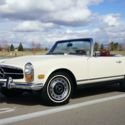 1970 Mercedes-Benz 280SL Pagoda 93,197 Miles Ivory Convertible 2.8L I6 Automatic
1970 Mercedes-Benz 280SL Pagoda 93,197 Miles Ivory Convertible 2.8L I6 Automatic
Mileage: 93197
 1970 Mercedes Benz 280SL Pagoda Automatic Restored 43k Miles Ivory White
1970 Mercedes Benz 280SL Pagoda Automatic Restored 43k Miles Ivory White
Mileage: 43,156
 1970 Mercedes-Benz 280SL Pagoda top automatic with zero rust 70000 Miles Blue Co
1970 Mercedes-Benz 280SL Pagoda top automatic with zero rust 70000 Miles Blue Co
Mileage: 70000
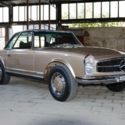 1970 Mercedes-Benz 280SL Pagoda
1970 Mercedes-Benz 280SL Pagoda
Mileage: 100
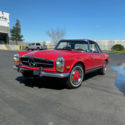 1970 Mercedes Benz 280SL Pagoda Coupe
1970 Mercedes Benz 280SL Pagoda Coupe
Mileage: 35361
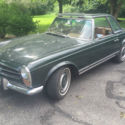 1970 Mercedes Benz SL-Class 280SL Pagoda
1970 Mercedes Benz SL-Class 280SL Pagoda
Mileage: 73,318
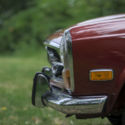 1970 Mercedes Benz 280SL Class Pagoda
1970 Mercedes Benz 280SL Class Pagoda
Mileage: 85,400
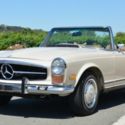 Original 1970 Mercedes Benz 280SL Pagoda Roadster
Original 1970 Mercedes Benz 280SL Pagoda Roadster
Mileage: 27850
 1970 Mercedes-Benz 280SL Pagoda Southern California
1970 Mercedes-Benz 280SL Pagoda Southern California
Mileage: 32,924
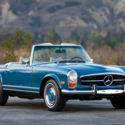 Original 1970 Mercedes-Benz 280SL Pagoda Hard-Top Soft-Top Convertible No Rust!
Original 1970 Mercedes-Benz 280SL Pagoda Hard-Top Soft-Top Convertible No Rust!
Mileage: 85,651
